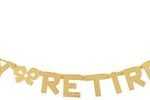

Bypass or Credit Shelter Trust: This is a very common trust in estate planning. It shelters the amount of exemption from tax available on death. Usually assets are held in this trust to benefit the surviving spouse—although other relatives can be beneficiaries as well. When the surviving spouse dies, the assets pass to heirs without being taxed in that individual’s estate. That’s why it’s called a “bypass” trust—it jumps over the surviving spouse’s taxable estate. However, with recent changes to the tax laws raising the estate tax exemption to $5 million ($5.45 million for 2016, given the inflation adjustment), the surviving spouse’s estate may no longer have estate tax liability. If that’s the case, then growth inside the trust will result in higher income tax costs to heirs. If this happens, one might consider moving assets out of the trust through permissible distributions or even terminating the trust if allowed.
QTIP Marital Trust: These trusts are intended to qualify for the estate tax marital deduction and obligate the payment of income at least annually to the surviving spouse, who is required to be the sole beneficiary. The income distribution requirement will affect the choice of investment allocation, and thought should be given to protecting the trust and growing it for remainder beneficiaries. This is especially important if they are children from a prior marriage and a husband has formed the trust for his second wife. The assets of a QTIP trust will typically be included in the spouse’s estate—meaning if his or her estate isn’t expected to be taxable, assets in the trust will receive a step-up basis at death with no offsetting tax cost. If that estate is expected to be subject to an estate tax, that risk should be reviewed.
Irrevocable Life Insurance Trusts: These days, life insurance is commonly held in trusts that own other substantial assets. One should determine the cash flow needed to maintain current and anticipated life insurance—with any excess being invested under a longer-term plan. At the insured’s death, the proceeds have to be invested in a manner that fits the post-death trust objectives.
Revocable (Living) Trusts: These trusts are controlled by the settlor who created the trust investments, and as a result, the allocations can be as he or she chooses. However, if the settlor becomes incapacitated and a successor trustee takes over, that person will probably be subject to the standards of a prudent investor and state law. If that is the case, maintaining the settlor’s investment plan might not work. Be sure to confirm the identity of the trustee and that he or she understands the responsibilities. In the event the settlor steps down as trustee, a new investment plan may be needed.
Dynastic (Grandchildren’s) Trusts: This trust was traditionally used to pay for college and was invested in a manner to achieve that goal. But with more 529 plans, grandchildren trusts are rarely used for this reason. Now, they’re usually designed to provide long-term growth for future uses—such as providing cash flow to grandchildren and future generations. Note: these trusts may include a term allowing the trust to own personal use assets. If so, that may be relevant to the investment timeline and risk profile.
Grantor Retained Annuity Trusts: Often called “GRATs,” these trusts are created to minimize estate taxes. Historically, they were structured for the short term with a very detailed asset allocation. A GRAT would have just one stock or one asset class, and if it grew substantially, it would be “immunized” by swapping in cash for the highly appreciated assets. When the GRATs ended, the process would be resumed. This is known as “rolling” or “cascading” GRATs. With the potential for repeal, the ability to re-GRAT assets sequentially year after year is not certain. Planning for GRATs for those who aren’t elderly should take a longer-term approach and might be funded with a diversified portfolio. The goal might now be to shift any investment performance in excess of the current low interest rates out of the estate over the term of the GRAT—making investment planning for this potential new application dramatically different from how it has been done historically.
Be sure to work with experienced professionals in estate planning, tax planning and financial advising.
Reference: Financial Planning (August 1, 2016) “How to invest trust assets”


